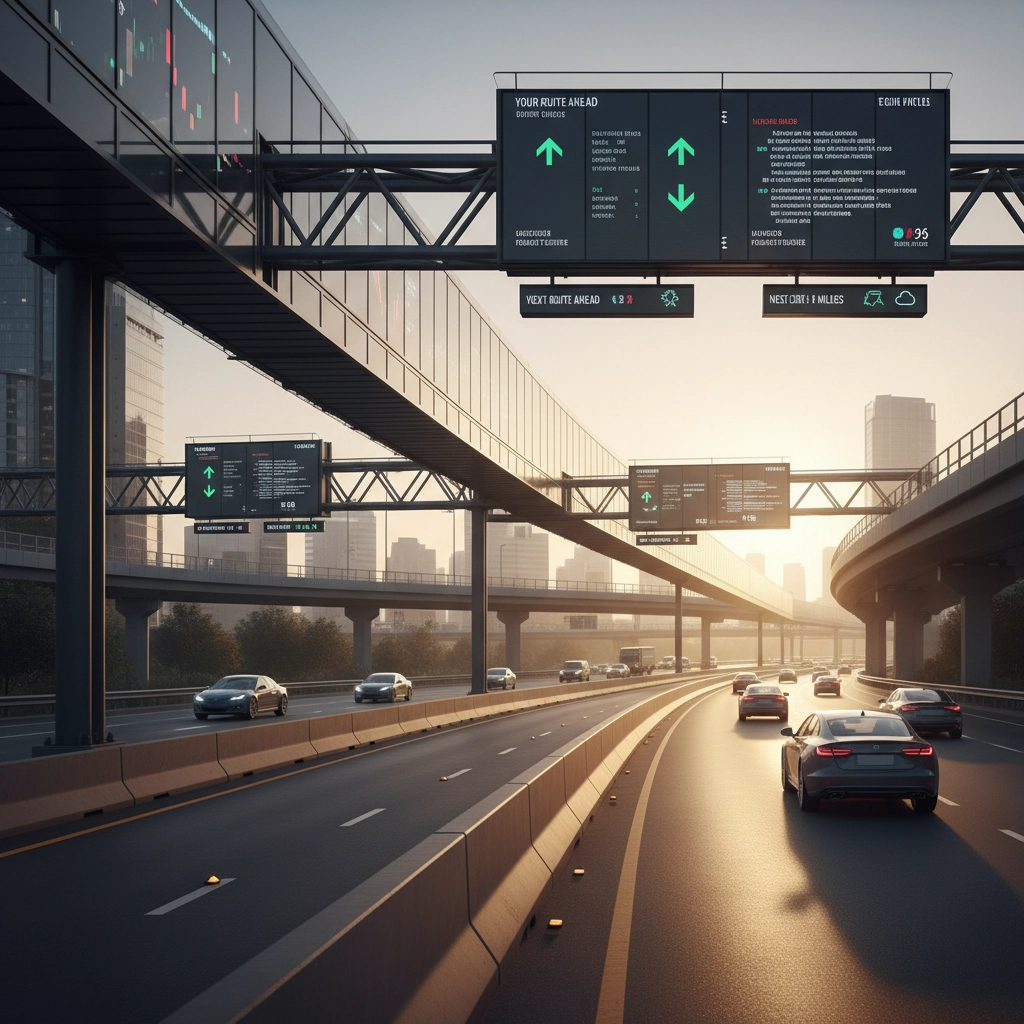Federal recruitment has reached a critical juncture where traditional job posting methods fail to deliver the specialized talent required for Department of Defense operations. The Pentagon's recent $200 million investment in AI contracts with major technology companies signals a fundamental shift in how military organizations must approach talent acquisition, particularly in transportation, logistics, and technical specialties.
Generic federal job postings produce generic results, leaving critical DOD positions unfilled while qualified candidates remain unaware of opportunities. Transportation marketing represents an untapped resource for federal recruiters seeking to reach mobile, technically skilled professionals who may not actively monitor traditional government job boards.
The Current Federal Recruitment Crisis
Department of Defense recruiters face unprecedented challenges in competing for the same talent pool as private industry. Colonel Kris Saling of Army Recruiting Command Innovation noted that technical professionals "tend not to stay in one place for very long," requiring recruitment strategies that intercept candidates during their daily commutes and travel patterns.
The DOD employs significantly more AI and technical talent than commonly recognized, yet this workforce remains "hidden" due to inconsistent identification and classification systems across armed services. Each military branch currently uses different approaches to defining, identifying, and tracking specialized talent, creating substantial gaps in strategic workforce planning.

Hack #1: Geofenced Highway Advertising Targeting Defense Contractors
Transportation marketing utilizes advanced geofencing technology to deliver recruitment messages directly to vehicles traveling specific highway corridors. Defense contractors and subcontractors typically follow predictable commute patterns between major installations and technology centers.
Strategic placement of digital advertising units along Interstate 495 around Washington D.C., Highway 101 in California's Silicon Valley, and Route 128 in Massachusetts's technology corridor enables targeted messaging to professionals already familiar with defense work. These individuals possess security clearances and relevant experience, reducing onboarding time and training costs.
Geofenced campaigns track vehicle frequency and dwell time, providing recruitment teams with data-driven insights about candidate engagement levels. Advanced analytics identify optimal messaging times and locations for maximum impact among target demographics.
Hack #2: AI-Powered Predictive Route Analysis for Mobile Recruitment
Machine learning algorithms analyze traffic patterns, commute data, and professional demographic information to predict when and where qualified candidates travel. This predictive capability enables recruitment teams to position transportation advertising resources with unprecedented precision.
Artificial intelligence processes multiple data streams including professional conference schedules, defense contractor shift changes, and university semester calendars to identify high-value recruitment opportunities. Mobile advertising units can be deployed strategically along predicted routes, maximizing exposure to qualified professionals during their daily activities.

Predictive analysis extends beyond simple traffic patterns to include economic indicators, industry conference schedules, and professional development events. This comprehensive approach ensures recruitment messages reach candidates during moments when career transitions are most likely.
Hack #3: Dynamic Content Personalization Based on Vehicle Data
Modern transportation marketing systems utilize license plate recognition and vehicle identification technology to deliver personalized recruitment content. Professional vehicles, commercial fleets, and high-end automobiles receive different messaging strategies based on probable occupant demographics.
Dynamic personalization ensures recruitment messages resonate with specific professional backgrounds, increasing response rates while reducing advertising waste on unqualified audiences.
Artificial intelligence algorithms analyze vehicle type, travel patterns, and geographic origin to generate personalized recruitment appeals. Technical professionals driving luxury vehicles receive different messaging than logistics specialists in commercial trucks, maximizing relevance and engagement for each audience segment.
Integration with professional databases and social media platforms enables real-time content optimization based on probable candidate qualifications and career interests.
Hack #4: Cross-Platform Retargeting Through Transportation Networks
Transportation marketing creates unique opportunities for multi-touchpoint recruitment campaigns spanning highways, rest stops, truck stops, and transportation hubs. Candidates initially exposed to recruitment messaging during commutes receive follow-up content through complementary channels.
Digital advertising networks connect highway billboards with mobile applications, fuel station displays, and transportation facility screens to create comprehensive recruitment funnels. This multi-platform approach ensures consistent messaging while providing multiple opportunities for candidate engagement.
Retargeting campaigns track candidate journey progression through various touchpoints, enabling recruitment teams to identify high-intent prospects and allocate resources accordingly. Advanced attribution modeling measures the contribution of each transportation channel to overall recruitment success.
Hack #5: Real-Time Job Matching Using Traffic Data Integration
Artificial intelligence systems monitor real-time traffic conditions and professional commute patterns to identify optimal moments for job matching notifications. When qualified candidates experience traffic delays near major defense installations, targeted recruitment messages appear with relevant position information.
Traffic data integration enables recruitment teams to capitalize on extended exposure times during congestion events. Commuters stuck in traffic represent captive audiences more likely to engage with detailed job descriptions and application processes.

Advanced algorithms correlate traffic patterns with professional schedules, identifying when technical workers, logistics professionals, and defense contractors are most likely to consider career opportunities. This temporal targeting significantly improves recruitment message effectiveness.
Hack #6: Behavioral Analytics for Continuous Campaign Optimization
Transportation marketing platforms generate extensive behavioral data about candidate interactions with recruitment content. Machine learning algorithms analyze engagement patterns, application conversion rates, and hire success metrics to continuously optimize campaign performance.
Behavioral analytics identify which messaging strategies, visual elements, and call-to-action formats produce the highest response rates among different professional demographics. This data-driven approach eliminates guesswork from recruitment marketing decisions.
Advanced analytics platforms track candidate progression from initial exposure through application submission and eventual hire, providing comprehensive attribution analysis for transportation marketing investments. Recruitment teams gain unprecedented visibility into campaign effectiveness and return on investment.
Hack #7: Automated A/B Testing Across Transportation Channels
Artificial intelligence enables continuous A/B testing of recruitment messages across multiple transportation advertising channels simultaneously. Different headline variations, imagery options, and value propositions can be tested in real-time to identify optimal combinations for specific audience segments.
Automated testing systems adjust campaign parameters based on performance metrics without human intervention, ensuring recruitment messages continuously improve throughout campaign duration. This optimization occurs across highway billboards, mobile displays, and digital signage networks simultaneously.
Automated A/B testing reduces time-to-optimization from weeks to hours, enabling recruitment teams to respond rapidly to changing market conditions and candidate preferences.
Advanced algorithms test not only message content but also timing, frequency, and channel combinations to maximize recruitment effectiveness. This comprehensive optimization approach ensures federal agencies achieve maximum return on transportation marketing investments.
Implementation Through Teltrans Solutions
Teltrans transportation programs provide the technological infrastructure necessary to implement these AI-powered recruitment strategies effectively. The company's advertising solutions integrate seamlessly with federal procurement requirements while delivering measurable results for DOD recruitment objectives.
Software as a Service platforms from Teltrans enable recruitment teams to manage complex transportation marketing campaigns without extensive technical expertise. User-friendly dashboards provide real-time campaign performance data and optimization recommendations.
Marketing automation tools streamline the implementation of predictive analytics, behavioral targeting, and cross-platform retargeting strategies. Federal recruiters gain access to enterprise-level transportation marketing capabilities through scalable, cost-effective solutions.
Measuring Success and ROI
Transportation marketing success requires comprehensive measurement frameworks that track both immediate engagement metrics and long-term recruitment outcomes. Key performance indicators include message reach, candidate response rates, application quality, and time-to-hire metrics.
Advanced attribution modeling connects initial transportation advertising exposure to eventual hire success, providing federal agencies with clear return on investment calculations. This measurement capability enables data-driven budget allocation decisions and campaign optimization strategies.
Regular performance analysis identifies which transportation channels, messaging strategies, and targeting parameters produce the highest-quality candidates for specific DOD positions. This intelligence guides future recruitment marketing investments and strategy development.
Ready to revolutionize your federal recruitment strategy? Contact Teltrans today to discover how AI-powered transportation marketing can fill your critical DOD positions faster and more cost-effectively than traditional methods. Our comprehensive solutions integrate seamlessly with federal procurement requirements while delivering measurable recruitment results.
Visit Teltrans.net to schedule your consultation and transform your recruitment approach.
Share this article:
SEO Tags: DOD recruitment, federal hiring, transportation marketing, AI recruitment, defense contractor hiring, government jobs, military recruitment technology
Hashtags: #DODRecruitment #FederalHiring #TransportationMarketing #AIRecruitment #DefenseJobs #GovernmentCareers #MilitaryRecruitment #TechRecruitment #FederalTalent #DefenseContracting

